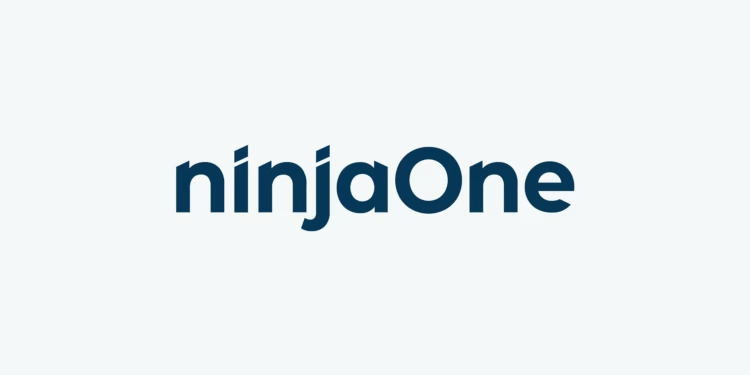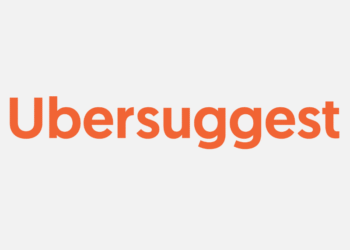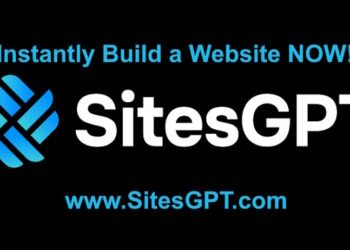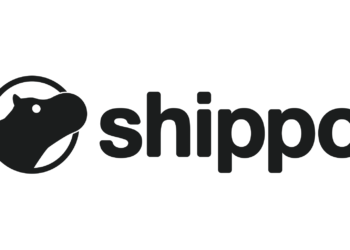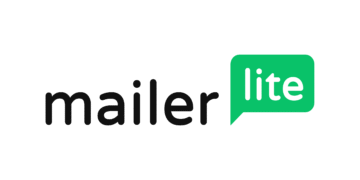What if you could manage your entire IT infrastructure from a single dashboard, no matter where your devices are located?
Modern businesses face complex technology challenges that require sophisticated management solutions. The need for comprehensive IT oversight has never been greater.
Founded in 2013 by Sal Sferlazza, this innovative platform has transformed how organizations handle their technology environments. It provides complete visibility and control over endpoints, networks, and applications.
Global companies like Nvidia, Nissan, Staples, and Konica Minolta trust this solution for their critical operations. The cloud-native architecture ensures scalability and continuous deployment capabilities.
This powerful software serves both Managed Service Providers and internal IT departments. It simplifies complex IT environments through automation and security management features.
Key Takeaways
- NinjaOne offers comprehensive endpoint management and remote monitoring capabilities
- The platform was founded in 2013 and serves major global enterprises
- Cloud-native architecture enables scalable deployment and continuous updates
- Solution designed for both MSPs and internal IT departments
- Provides automation, security management, and remote access features
- Simplifies complex IT environments through centralized management
- Trusted by industry leaders across various sectors
Introduction to NinjaOne IT Management Platform
Modern IT environments demand powerful tools that can handle diverse endpoints and complex networks. The right platform brings everything together in one place.
This innovative solution provides complete endpoint oversight. It helps teams manage devices, automate tasks, and maintain security from a central dashboard.
What is NinjaOne?
NinjaOne is a cloud-native Remote Monitoring and Management (RMM) product. It offers comprehensive endpoint management for modern IT teams.
The platform delivers real-time visibility across all connected devices. It simplifies complex IT environments through automation and centralized control.
Key features include remote access, patch management, and automated scripting. These tools help IT professionals save time and reduce manual work.
Company Background and Market Position
Founded in 2013, this platform emerged during a period of rapid IT evolution. The founding vision focused on simplifying technology management for businesses of all sizes.
The cloud-native architecture enables exceptional scalability and adaptability. This design supports continuous integration and deployment practices.
Today, the solution holds a strong position in the competitive IT management industry. It serves major enterprises across various sectors worldwide.
Target Audience: MSPs and IT Departments
The platform specifically serves Managed Service Providers (MSPs) and internal IT departments. These groups benefit from its comprehensive management capabilities.
MSPs use the solution to deliver superior services to their clients. Internal IT teams leverage it to maintain organizational technology infrastructure.
Both audiences appreciate the platform’s intuitive interface and powerful automation features. The system adapts to various organizational needs and scales with business growth.
Core Remote Monitoring and Management Capabilities
Centralized control over diverse device networks is essential for streamlined IT management. The platform’s comprehensive monitoring system provides complete visibility across all endpoints.
This approach eliminates manual oversight while ensuring optimal performance. Technicians gain immediate insight into system health and potential issues.
Endpoint Task Automation Features
Repetitive IT tasks consume valuable technician time and resources. The platform’s automation capabilities handle these routine operations efficiently.
Standardized processes ensure consistent outcomes across all devices. Application installations and device configurations become automated workflows.
This automation reduces human error and improves operational efficiency. Teams can focus on strategic initiatives rather than manual repetitive tasks.
Real-time Monitoring and Alert Systems
Continuous oversight of device performance is critical for modern IT environments. The monitoring system tracks all connected endpoints in real-time.
Custom alert templates notify technicians immediately when issues arise. These notifications are based on specific performance metrics and health indicators.
The alert system ensures prompt response to potential problems. This proactive approach minimizes downtime and maintains system reliability.
Secure Remote Access Solutions
Direct control over managed endpoints is essential for effective troubleshooting. The platform provides secure remote access capabilities.
Technicians can connect to devices regardless of physical location. This access supports quick resolution of technical issues.
Security protocols ensure all remote connections remain protected. The system maintains comprehensive inventory tracking during all access sessions.
These capabilities position the solution as a leader in remote monitoring software. Organizations benefit from reduced manual intervention and improved operational efficiency.
Mobile Device Management Excellence
Effective control over mobile endpoints is critical for modern enterprise security and productivity. Organizations need comprehensive solutions that handle diverse mobile platforms while maintaining security standards.
Cross-Platform Mobile Support
The platform delivers robust support for both Android and iOS ecosystems. This cross-platform capability ensures consistent management across all mobile devices in an organization.
Automated enrollment simplifies device onboarding for IT teams. Both company-owned and personal devices receive appropriate management policies.
Remote provisioning capabilities streamline device setup processes. This approach reduces manual configuration time while maintaining security standards.
Mobile Policy Creation and Enforcement
Centralized policy management enables consistent security across all mobile endpoints. Administrators can create and deploy policies at scale.
These policies control app installation, data access, and device functionality. Enforcement occurs automatically across the entire mobile fleet.
Kiosk mode implementations support dedicated device experiences. Single-app or multi-app configurations meet various business requirements.
Policy enforcement ensures compliance with organizational security standards. This systematic approach protects sensitive business data.
Geolocation and Remote Management Tools
Advanced geolocation services provide accurate device tracking capabilities. This feature supports inventory maintenance and security monitoring.
Remote screen-sharing enables technicians to troubleshoot mobile issues effectively. Direct visual access simplifies problem resolution.
Security management features include remote device locking and wiping capabilities. These tools protect data when devices are lost or stolen.
Comprehensive remote management ensures continuous device control. This capability maintains operational integrity across mobile environments.
Advanced Remote Control Functionality
Modern IT teams need powerful remote access tools that work instantly and securely. The platform delivers exceptional remote control capabilities that transform how technicians assist users.
These features enable quick problem resolution from any location. They provide complete visibility and interaction with managed endpoints.
One-Click Connection Technology
Instant access to devices saves valuable time during support sessions. The one-click connection technology establishes immediate links to both Mac and Windows endpoints.
This rapid connection process eliminates complex setup procedures. Technicians can begin troubleshooting within seconds of receiving a request.
The streamlined access method significantly improves response times. It ensures technical teams can address issues promptly without delays.
Dynamic Bandwidth Adjustment
Network conditions vary greatly across different locations and connections. The dynamic bandwidth adjustment feature automatically optimizes performance based on current network quality.
This intelligent system switches between TCP and UDP protocols as needed. It maintains smooth remote sessions even in challenging network environments.
Automatic protocol switching ensures consistent remote access quality. Users experience reliable connections regardless of their network situation.
High-Level Security Protocols
Remote connections must maintain strict security standards at all times. The platform employs x25519+XSalsa20+Poly1305 encryption for all remote sessions.
This advanced encryption methodology protects data during transmission. It prevents unauthorized access to sensitive information.
Additional security features include controlled clipboard synchronization. This prevents accidental data exposure between technician and user devices.
Comprehensive encryption ensures complete session protection. Organizations can trust that their remote support remains secure.
The platform includes multi-screen support for complex workstation environments. Differentiated cursors help users follow technician actions during remote sessions.
Live chat functionality enables real-time communication during support. Focus screen indication borders show which display the technician is viewing.
These collaborative features enhance the remote support experience. They create a more productive interaction between technicians and users.
Custom shortcuts for both Mac and Windows streamline common technician tasks. The comprehensive toolset reduces the time needed to resolve various issues.
NinjaOne’s remote control capabilities represent a significant advancement in IT support technology. They provide teams with the tools needed for efficient remote assistance.
Comprehensive Patch Management System
Effective patch management represents one of the most fundamental aspects of cybersecurity hygiene. Organizations need robust solutions that handle updates across diverse operating systems and applications.
The platform delivers enterprise-grade patching capabilities through cloud-based architecture. This approach ensures consistent security across all managed endpoints.
Multi-OS Patching Capabilities
Modern environments contain diverse operating systems that require consistent update management. The solution supports comprehensive patching across Windows, Mac, and Linux platforms.
Third-party application updates receive equal attention alongside operating system patches. This holistic approach ensures complete coverage across all software components.
Unified management simplifies complex multi-platform environments. Technicians maintain consistent update policies regardless of operating system differences.
Automated Patch Deployment
Manual patch deployment consumes significant time and often leads to inconsistencies. The platform automates the entire patch management lifecycle from identification to deployment.
Zero-touch systems automatically identify required updates across all devices. Approval workflows ensure proper validation before deployment begins.
Cloud-based architecture eliminates VPN requirements for remote endpoint updates. This flexibility supports distributed workforce environments effectively.
Automated deployment reduces manual intervention while ensuring timely updates. The system handles patch distribution without requiring technician involvement.
Vulnerability Reduction Features
Proactive security measures significantly reduce organizational risk exposure. The platform utilizes CVE/CVSS standards to prioritize critical vulnerability patches.
This approach can reduce vulnerabilities by up to 75% through systematic patch application. Real-time tracking provides visibility into patch compliance status across all devices.
Detailed reporting capabilities offer insights into patch deployment effectiveness. Organizations can demonstrate compliance with various security standards through comprehensive documentation.
Proactive patching significantly enhances overall security posture. The NinjaOne platform maintains continuous protection through systematic update management.
Helpdesk and Ticketing Solutions
Efficient IT support requires streamlined processes that connect users with technical resources quickly. The platform delivers comprehensive ticketing solutions that automate workflows and enhance customer service experiences.
Automated IT Ticketing Workflows
Manual ticket handling often creates delays and inconsistencies in support delivery. The system automates ticket creation based on predefined conditions and triggers.
Customizable response templates ensure consistent communication across all support interactions. These templates save time while maintaining professional standards.
Automated routing directs tickets to appropriate technicians based on skill sets. This intelligent distribution optimizes resource allocation and reduces resolution times.
Condition-based rules automatically categorize and prioritize incoming requests. The system handles repetitive tasks without manual intervention.
Self-Service Client Portal
Empowering users to find solutions independently reduces support ticket volume significantly. The self-service portal provides customers with direct access to knowledge resources.
Brandable interface options allow organizations to maintain consistent visual identity. Users can submit tickets, track progress, and access solutions through a unified interface.
The portal enables customers to resolve common issues without technician assistance. This approach frees support resources for more complex problems.
Real-time status updates keep users informed about their ticket progress. Transparent communication improves overall customer satisfaction.
IT Asset Management Integration
Understanding device context is crucial for effective troubleshooting and support. The platform integrates comprehensive inventory management with ticketing functions.
Real-time health data provides technicians with immediate insight into device performance. This information helps identify root causes faster during incident investigation.
Integrated asset data enables smarter triage and resource allocation. Technicians access complete device histories and configuration details directly from tickets.
The system maintains updated inventory records across all managed endpoints. This integration creates a holistic view of organizational technology assets.
These features work together to create a superior support experience. Organizations benefit from reduced resolution times and improved customer satisfaction.
IT Automation and Scripting Capabilities
Streamlining complex IT operations requires intelligent automation tools that adapt to diverse environments. These capabilities transform how technical teams handle routine and complex tasks across multiple endpoints.
Modern automation solutions must accommodate various skill levels while maintaining security standards. The platform delivers comprehensive scripting features that empower technicians without requiring advanced coding knowledge.
Multi-Step Task Automation
Complex IT processes often involve multiple sequential steps that consume valuable time. The automation system handles these multi-step tasks through predefined workflows and intelligent triggers.
Tasks can execute on-demand, according to schedules, or in response to performance thresholds. This flexibility ensures timely execution based on organizational needs and conditions.
Automation coverage extends across critical IT functions including patch management and backup operations. The system also handles antivirus management, remote control sessions, and drive encryption processes.
Performance-based triggers initiate automated responses when systems meet specific conditions. This proactive approach prevents issues before they impact operations.
Dynamic Script Forms
Customization requirements vary across different environments and scenarios. Dynamic Script Forms enable technicians to modify script behavior without altering underlying code.
These forms provide intuitive interfaces for parameter adjustment and configuration changes. Technicians can tailor scripts to specific needs through simple form interactions.
Form-based customization eliminates the need for coding expertise in most scenarios. This approach makes advanced automation accessible to technicians with varying skill levels.
The system manages script parameters through organized form elements. This structured approach ensures consistency and reduces configuration errors.
Custom Script Implementation
Organizations often require specialized automation for unique processes and requirements. The platform supports custom script development and implementation alongside built-in automation features.
Technicians can create, test, and deploy custom scripts through integrated development tools. Version control and testing environments ensure script reliability before deployment.
Custom scripts integrate seamlessly with the platform’s existing automation framework. This integration allows organizations to extend automation capabilities according to specific needs.
The system provides execution timing options including immediate, scheduled, and conditional triggers. These options ensure scripts run at appropriate times based on business requirements.
These automation features collectively enhance operational efficiency across IT environments. They reduce manual intervention while maintaining consistency and reliability in task execution.
User Experience and Platform Interface
A well-designed interface transforms complex IT management into intuitive daily operations. The platform delivers an exceptional user experience through thoughtful design and logical organization.
Technicians navigate seamlessly between different management views and functions. This streamlined approach reduces training time and increases productivity.
Dashboard Navigation and Layout
The interface features a dual dashboard system for comprehensive oversight. The System Dashboard provides complete visibility across all organizations and devices.
Organization Dashboards focus on specific client or department environments. This hierarchical structure supports both broad oversight and detailed management.
Health overview panels display critical status information at a glance. Color-coded indicators quickly communicate device health and performance levels.
The left-panel endpoint list enables rapid access to individual devices. Click-through functionality reveals detailed information for each managed endpoint.
Organization Management Tools
Managing multiple clients or departments requires sophisticated organizational tools. The platform provides comprehensive grouping and filtering capabilities.
Custom views can be saved and shared among team members. Full URL listing allows technicians to bookmark specific management views.
These sharing features enhance collaboration across technical teams. Everyone accesses the same organized view of device inventories and status information.
Real-Time Status Monitoring
Immediate visibility into system health is crucial for proactive management. The interface displays real-time status updates across all monitored endpoints.
Performance metrics update continuously without manual refresh requirements. Technicians always see current device conditions and potential issues.
This live monitoring capability supports quick decision-making and rapid response. The system ensures technical teams have the most current information available.
The intuitive design supports daily critical operational tasks effectively. Users benefit from reduced cognitive load and increased management efficiency.
Security, Compliance, and Pricing Structure
Modern organizations face increasing threats to their digital infrastructure. A comprehensive approach to protection requires robust security features and clear compliance frameworks.
Understanding cost structures helps businesses make informed decisions about their IT investments. This section explores how the platform addresses these critical business needs.
Endpoint Security Management
Complete endpoint protection forms the foundation of organizational security. The solution provides extensive control over all connected devices.
Application management features allow administrators to control software installations. Remote registry editing enables configuration changes across multiple devices simultaneously.
Mass device configuration ensures consistent security policies across all endpoints. Script deployment capabilities automate security-related tasks efficiently.
Role-based access control maintains strict permission granularity. Multi-factor authentication adds an extra layer of protection for system access.
Comprehensive audit logs track all security-related activities. AES-256 encryption protects sensitive information during transmission and storage.
Credential injection allows secure access to client machines without exposing passwords. This feature maintains security while enabling necessary technical support.
Regulatory Compliance Standards
Meeting industry regulations is essential for businesses operating in various sectors. The platform supports multiple compliance frameworks through built-in features.
GDPR requirements are addressed through data protection and privacy controls. HIPAA compliance ensures proper handling of healthcare information.
SOC 2 Type II and SOC 3 certifications demonstrate rigorous security practices. These standards validate the platform’s commitment to information security.
The solution helps organizations maintain compliance across different locations. Automated reporting features simplify audit preparation processes.
Security management tools align with industry best practices and regulatory requirements. This alignment reduces compliance burdens for internal teams.
NinjaOne Pricing Model and Plans
The pricing structure follows a transparent per-endpoint model. Costs typically range between $2 and $4 per device depending on volume and features.
Custom quotes are available for organizations with specific requirements. Volume discounts apply for larger deployments across multiple locations.
Add-on services provide flexibility for specialized needs. Organizations can scale their investment according to actual usage and requirements.
Pricing negotiations consider the organization’s size and partnership potential. The model ensures fair costs for both small teams and enterprise deployments.
Security features integrate seamlessly with the overall platform functionality. This integration provides comprehensive protection without additional complexity.
The pricing approach offers clarity while maintaining competitive value in the market. Businesses can budget effectively for their security and compliance needs.
User Feedback and Market Reception
Customer feedback serves as the ultimate validation for any technology platform’s real-world performance. The collective voice of users provides genuine insights into daily operational effectiveness.
Customer Review Analysis
The platform maintains an impressive 4.7/5 rating on G2 based on over 1,600 verified reviews. This high satisfaction level reflects consistent performance across diverse organizational environments.
Users frequently highlight the comprehensive feature set and operational simplicity. The intuitive interface receives particular praise for reducing training time and increasing productivity.
Automation capabilities and responsive support services stand out as recurring positive themes. Many reviews mention significant time savings through automated workflows and prompt technical assistance.
Industry Recognition and Awards
The 2025 G2 Winter Report positioned the solution as top performer across multiple categories. It achieved leadership status in endpoint management, patch management, and mobile device management.
Remote monitoring and management capabilities also received top rankings. These recognitions validate the platform’s comprehensive approach to IT infrastructure oversight.
Industry awards reflect consistent excellence in both product innovation and customer satisfaction. The accumulated accolades demonstrate market leadership in the competitive IT management space.
Common Praise and Criticism Points
Customers consistently appreciate the platform’s rich feature set and operational reliability. The automation tools receive particular acclaim for streamlining complex IT tasks.
Support team responsiveness and expertise frequently appear in positive feedback. Users value the knowledgeable assistance they receive during implementation and daily operations.
Some users note limitations in advanced scripting capabilities and email management features. These areas represent opportunities for future product enhancement and development.
The overall user experience receives overwhelming positive feedback despite minor improvement areas. Most organizations find the platform effectively addresses their core management needs.
Customer suggestions directly influence the product roadmap and feature development. The development team actively incorporates user feedback into ongoing platform improvements.
This responsive approach to customer input ensures continuous alignment with market needs. It maintains the platform’s relevance in evolving IT environments.
Conclusion: Is NinjaOne Right for Your Organization?
Choosing the right IT management solution requires careful consideration of your organization’s specific needs and scale. NinjaOne stands out as a comprehensive platform for enterprises managing thousands of endpoints.
The solution excels in remote monitoring and offers smooth onboarding processes. Its intuitive interface simplifies complex device management across Windows and other environments.
Larger organizations benefit most from this platform’s scalability and advanced tools. Smaller businesses may find the pricing structure less ideal for limited endpoint counts.
Requesting a demo helps determine if NinjaOne aligns with your operational requirements. The platform delivers exceptional value for companies needing robust endpoint management capabilities.
FAQ
What is NinjaOne?
NinjaOne is a unified IT management platform that provides remote monitoring, endpoint management, and automation tools for IT teams and managed service providers.
Who uses NinjaOne?
Managed service providers and corporate IT departments use this platform to streamline device management, improve security, and automate routine tasks.
Does NinjaOne support mobile devices?
Yes, it offers robust mobile device management with cross-platform support, policy enforcement, and remote control capabilities.
How does patch management work?
The system automates patch deployment across multiple operating systems, reducing vulnerabilities and ensuring compliance with minimal manual effort.
Can NinjaOne help with ticketing?
Yes, it includes integrated helpdesk and ticketing solutions with automated workflows and a self-service client portal for efficient issue resolution.
Is remote access secure?
Absolutely. The platform uses high-level security protocols, dynamic bandwidth adjustment, and one-click connection technology for safe remote control.
What about automation features?
You can automate multi-step tasks, use dynamic script forms, and implement custom scripts to save time and reduce errors.
How is pricing structured?
NinjaOne offers flexible pricing plans based on endpoints managed, with options that scale to fit organizations of different sizes and needs.

